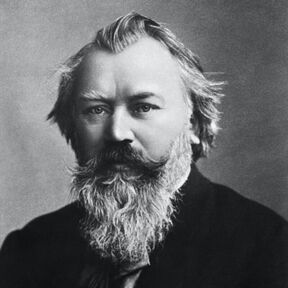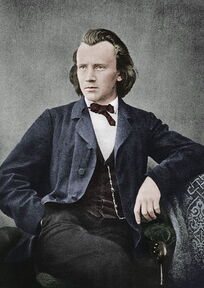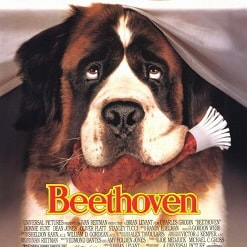Carlos simon
fate now conquersDIVE IN!
American composer Carlos Simon (1986 - ) has been a rising star for many years. Just in the past handful of years his music has been performed by major orchestras around the world, including by the Colorado Symphony. Fate Now Conquers is one of Simon's most frequently performed concert openers, and just one listening will clarify exactly why - as it thrills audiences each time.
RESOURCES:An excerpt from a live performance by the New York PhilharmonicA cool trippy graphic score video of Beethoven's 7th Symphony second movement which inspired Fate Now ConquersHIGHLIGHTS:
Carlos Simon's "Fate Now Conquers" was inspired by an entry from Ludwig van Beethoven's journal; an excerpt from Homer's "The Illiad": “But Fate now conquers; I am hers; and yet not she shall share In my renown; that life is left to every noble spirit And that some great deed shall beget that all lives shall inherit.”
In Carlos Simon's own words: "Using the beautifully fluid harmonic structure of the 2nd movement of Beethoven’s 7th symphony, I have composed musical gestures that are representative of the unpredictable ways of fate. Jolting stabs, coupled with an agitated groove with every persona. Frenzied arpeggios in the strings that morph into an ambiguous cloud of free-flowing running passages depicts the uncertainty of life that hovers over us.
We know that Beethoven strived to overcome many obstacles in his life and documented his aspirations to prevail, despite his ailments. Whatever the specific reason for including this particularly profound passage from the Iliad, in the end, it seems that Beethoven relinquished to fate. Fate now conquers."
"Fate Now Conquers" was commissioned by the Philadelphia Orchestra and premiered March 26-29, 2020. A typical performance lasts just 5 minutes.Enjoy listening!Johannes brahms
PIANO concerto #1 IN D MINORDIVE IN!
Johannes Brahms (1833-1897) was a German composer and pianist from the middle Romantic era. His Piano Concerto #1 is now one of his most beloved works for large ensemble, even though it initially received a low critic AND audience score on Rotten Tomatoes. Okay, I'm joking about Rotten Tomatoes, but it did get a chilly reception in 1859 when he first performed it. Brahms took five years to complete it in 1858. He struggled with his musical ideas, first configuring it for two pianos, then thinking it might be his first symphony, and even briefly making an arrangement for one piano and two players ("piano four hands") before making it into a concerto for piano and orchestra. It is a powerfully beautiful piece of music and a testament to Brahms’ determination to succeed.RESOURCES:A recording of the entire concerto, featuring guest artist Hélène Grimaud with the Vienna Philharmonic.Learn about guest artist Hélène Grimaud, musician and environmental activist.HIGHLIGHTS:
Piano Concerto #1 is in three movements. The first is massive and in a medium tempo, the second is ruminative and in a slower contemplative tempo, and the third is fiery and flamboyant in a peppy tempo.
Enjoy the expansive orchestral writing that permeates the piece, as well as the solo piano cadenza breaks handled masterfully by guest artist Hélène Grimaud.
A typical performance of Piano Concerto #1 lasts about 50 minutes.NERD ASSIGNMENTS!
Consider - Struggling With a Creative Idea:
About an early public performance, Brahms wrote: "It did not go badly. I played considerably better than in Hanover, and the orchestra was excellent, but the first rehearsal failed to produce any effect on the musicians or the audience. [In Brahms’ day rehearsals were open to the public.] At the second rehearsal, there were no listeners and not a muscle moved on the faces of the players... At the performance, the first and second movements produced no effect whatsoever, and at the end there was only a little desultory applause, which was immediately suppressed by hisses."
Think about a time you changed your mind a few times about something important. Sometimes we have an idea that doesn't seem to fit or work quite right in its original context. Brahms was faced with this dilemma when he came up with the first musical ideas that eventually became Piano Concerto #1. He thought they might make a good piece for two pianos, but then tried them out as a symphony. Finally after five years of hard work he used those same ideas plus some new ones and arrived at the now famous Piano Concerto #1.
Try - Rework Your Own Musical Idea
Feel free to gather some friends or family members for this one! Working in small groups (or by yourself if you prefer!), take a few minutes to come up with some basic musical ideas that determine a) the tempo (speed) and dynamics (loudness/softness) of the music; b) a basic rhythm that can be repeated; c) a melody or melodic fragment; and d) the instruments that might be used to convey this music. If you have access to musical instruments, try out some of these short compositions. Once you have your ideas set, make a significant change to the original plan. Compare the different approaches and try to decide which is best. What criteria did you use to make your decision? Did you struggle at all with the decision or was it a clear choice?
Reflect - Listening for dialogue and interpretation
Now that you've experienced this activity, why do you think Brahms may have struggled with his choices?
Listen to the Colorado Symphony performance live and again via recording if possible. As you listen, try to imagine it as a symphony or a piece for only two pianos. What might be different in these cases? How does the first movement seem more like a symphony in the beginning? If possible, note your observations in a journal as you listen. There's a lot to take in!ludwig van beethoven
Symphony #5 in C minorDIVE IN!
It’s hard to imagine a more generally well known composer or piece of classical music than Ludwig van Beethoven (1770-1827) and his 5th Symphony. It is a piece of music that has stood as a monument to the grit and innate creativity of human culture, and with good reason. Enjoy learning a bit about this piece and listening to the Colorado Symphony’s performance.HIGHLIGHTS:
Beethoven composed Symphony #5 between 1804 and 1808, working on it primarily after 1807. He paused it to complete Symphony #4, and finished it while working on Symphony #6. It lasts approximately 35 minutes and is constructed in a typical 4 movement structure.
Often referred as the “Fate Symphony”, Symphony #5 premiered in a marathon 4 hour all Beethoven concert that included the premiere of the 6th symphony, 3 movements of the Mass in C, the 4th piano concerto, and the Choral Fantasy. Oh to have official merch from that event!
The symphony is referenced in numerous pop culture sources but possibly none so completely random as “Beethoven’s 5th”, a direct to video family movie featuring dog actor J.S. Barque as the title character.
Ludwig van Beethoven was an admirer of Wolfgang Amadeus Mozart. In the opening of the 3rd movement of Symphony #5 Beethoven quoted the first 9 notes of the final movement of Mozart’s 40th Symphony. Whew! That’s a lot of words for “Beethoven sampled some Mozart in Symphony #5”.
Beethoven’s score calls for 2 flutes and piccolo, 2 oboes, 2 clarinets, 2 bassoons and contrabassoon, 2 horns, 2 trumpets, 2 trombones and bass trombone, timpani, and the usual string section of violins, violas, cellos, and basses. Notably, this is the first symphony EVER to include trombones, contrabassoon, and the dazzling piccolo!RESOURCES:A live performance recording of the full symphonyDirect comparison of the "sample" Beethoven took from Mozart, featuring bassist Susan Cahill and violinist Yi Zhao
LISTENING MAP:
Movement 1: Allegro con brio (in English: Quick with vigor)
This music is the most recognizable, especially for the opening da-da-da-DAH gesture. This short simple statement, often referred to as the “fate motive” becomes a major motive and a unifying element in the entire symphony. Listen for the myriad ways Beethoven develops those notes and that rhythm into different shapes, lengths, and expressions.
Movement 2: Andante con moto (in English: Walking pace, with movement)
This music has two themes, introduced right away in the lower strings, which then spin variations throughout the movement. It sounds like a piece of woven textile art, becoming more and more complex and interconnected as it goes.
Movement 3: Scherzo: Allegro (in English: Playful: Quick)
This music is in a three part structure, where the outer parts are similar and in contrast to the middle section. It’s based on an older Minuet and Trio form established by FJ Haydn. Listen for the “fate motive” from the first movement as it appears in the French horns in this Scherzo.
Movement 4: Allegro - Presto (in English: Ending. Quick - Fast)
This movement is in C major rather than following the convention of finishing in the same key (in this case C minor) as the start of the work. It is a rather triumphant sounding and very grounding way to finish. In Beethoven’s own words, “Many assert that every minor piece must end in the minor. Nego! [I deny!] …Joy follows sorrow, sunshine—rain.”CONSIDER AND DISCUSS:
Beethoven nicknamed or inscribed his 3rd and 6th symphonies (Eroica, Pastorale) but left no written indications of a particular inspiration for his 5th. The 5th has a peculiar way of not only engaging a listener but grabbing them and going straight to the heart of something intensely personal. Essentially, people find what they want to in this symphony. Noted author, musician, and critic E.T.A. Hoffmann wrote “How this wonderful composition, in a climax that climbs on and on, leads the listener imperiously forward into the spirit world of the infinite!” Romantic era composer Hector Berlioz remarked that the 5th “emanates directly and solely from the genius of Beethoven. It is his own intimate thought that is developed; and his secret sorrows, his pent-up rage, his dreams so full of melancholy oppression, his nocturnal visions and his bursts of enthusiasm furnish its entire subject, while the melodic, harmonic, rhythmic, and orchestral forms are there delineated with essential novelty and individuality, endowing them also with considerable power and nobility.” And due to an assertion by Beethoven’s assistant that the opening rhythmic figure is ‘fate knocking at the door’ many people refer to it as the Fate Symphony and believe it is a triumphant blast against his worsening deafness.
What do you experience and personally connect to when you listen to Symphony #5? What elements of the music support these observations?TRY - Developing an Idea
In Symphony #5, Beethoven started with a very short idea of just 2 notes and a simple rhythm but by changing - or developing - his idea he made a whole symphony out of it!
The development of an idea is a little like a game of Telephone. The original idea changes bit by bit until it may be only marginally recognizable by the end. Musical ideas can be changed or developed in lots of different ways including changing the tempo (speed), dynamics (volume), pitch, or rhythm. You can also repeat it, turn it upside down or inside out, or even make it go backwards. Try it yourself!
Sing or play a 5 (ish!) note idea. Write it down if possible.
Alter it by just one element from the list of ways above. Sing or play the new version and compare it to the original. Make any changes or edits.
Repeat this process and re-order your new versions as you like.
Voila! (not viola…🤓) You’ve composed and developed an original idea, just like Beethoven did!LISTENING:
Now that you’ve had a chance to consider, discuss, and get active around Beethoven’s 5th Symphony it’s time to listen to the Colorado Symphony performance. There are all sorts of ways to engage as a listener. At Boettcher Concert Hall the live music experience is pretty exciting. Try listening to it at home as well, where you can sing/hum/whistle along, move and dance, journal or draw what you hear, or just turn the volume WAY up and listen for sheer pleasure!
READY TO ENGAGE!
Please share your experience with me – [email protected]!
I’d love to hear about it or see any of your activities, journaling, or creations!
I’d love to hear about it or see any of your activities, journaling, or creations!





